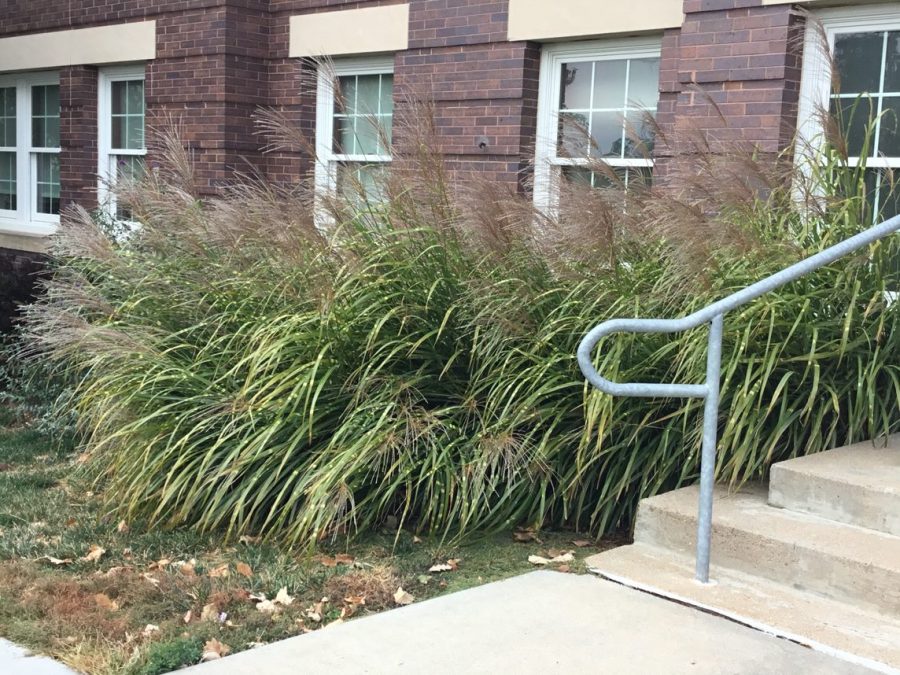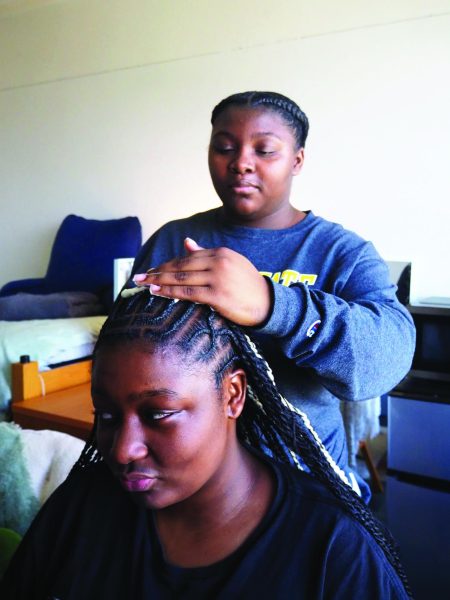WSC’s Natural History Museum preserves diversity of life in Nebraska
A small section of native tallgrass prairie plants in front of the Humanities building at Wayne State.
October 20, 2020
The Wayne State College A. Jewell Schock Museum of Natural History houses over 15,000 specimens of birds, mammals, invertebrates, plants, and fossils. The museum was created by Jewell Schock, a former zoologist at WSC.
The mission of the Museum of Natural History is to preserve the natural diversity of life in Northeast Nebraska through maintaining and adding to collections, not only through science education and outreach, but also through actions to conserve and restore natural habitat in the region. Several individuals have used specimens from the museum to inspire and inform their art, according to the Wayne State College website.
The life sciences department is now enlarging the prairie area so that students and community members can have a better sense of what this area was like 150 years ago. Students majoring in biology and students taking life science general education courses use this area for studying.
“Wayne State College is an affiliate site of the Nebraska Statewide Arboretum dating back to the 1980s. In 2019, WSC received the Affiliate Excellence Award from the Nebraska Statewide Arboretum, an award that honored the years of dedication and commitment of the individuals that made the WSC arboretum what it is today, “Assistant Director of Campus Maintenance, said Dan Wibben, Wayne State’s assistant director of campus maintenance.
“Dr. Charles Maier was a very influential curator of the WSC arboretum in the 1980s and 1990s. Much of the landscape and plant life at WSC today were the results of the ideas and hard work of Dr. Maier,” Wibben said.
The WSC Ecology Study Area includes the wet meadow area and the upland prairie to the north. Dr. Charles Maier planted many of the trees in this area and a small section of native tallgrass prairie plants. He also established the beds along the trail that showcase individual plants, according to wsc.edu.
“I replaced Dr. Charles Maier at WSC about 25 years ago… he planted a lot of the trees on campus in his 30 years here,” said Mark Hammer, a WSC staff member. “He still lives in the area, but winters down in Texas.”
Down the hill, the wet meadow was established to the north of the tennis courts. Banks were established to retain water in the ravine. The native plant seeds were sown around the perimeter of the wetland area, according to wsc.edu.
“Much of the plant life, trees, perennials, and grass naturally goes dormant over the winter and requires little maintenance until spring,” Wibben said. “Perennials are trim back to protect the roots for winter freeze. Underground irrigation systems are drain so that the pipes do not freeze over the winter.”
Wibben said that the grounds department and the Campus Beautification Committee collaborates to make decisions about the plant life on campus. The WSC Grounds Dept. maintains grass, plants and trees. There are three full-time grounds staff members and five part-time staff that maintain 128 acres of campus.
Native grasses like big bluestem and side-oats grama are becoming established. Also, forbs (plants with showy flowers) such as prairie coneflower and plains coreopsis are becoming common. When water is retained in the pond, wood ducks have seen landing in the water, and chorus frogs can be heard, according to wsc.edu.
“The changing of the seasons can be a beautiful transition – leaves changing colors in the fall and green plants sprouting in the spring, but each season presents its challenges in maintaining a campus,” Wibben said. “Now, we are preparing for winter. There is a great deal of preparation and tasks that are required to prepare for the change of seasons.”
Tallgrass prairie is a work in progress. When non-native bromegrass and Siberian elm trees removed is when native prairie plants seed. The chosen areas will turn into a tallgrass prairie like the prairies that occupied most of eastern Nebraska, according to wsc.edu.
“Trying to move snow when the campus is bustling with traffic can be very challenging because many of the parking lots are full all day long,” Wibben said. “Sometimes we get light snow that can be removed with brushes and the sidewalks and streets are dry underneath. Other times the snow may be very heavy and wet and very time-consuming and difficult to move. Freezing rain can be very tricky. Salting the sidewalks can be effective but using too much can damage the concrete and grass around the sidewalks.”
Dr. Chuck Meier is working to restore the seven acres of tallgrass prairie established in 2002. The tallgrass prairie of Nebraska contained few trees, and frequent fires would kill the tree seedlings. Non-native plants must be removed before native plant species can be planted to establish prairie, according to wsc.edu.









